S
enso-ji, from the Edo period (1360-1868), is the oldest temple in Tokyo. It is the temple of Avalokitesvara Bodhisattva, Goddess of Mercy. I wanted to find out more about Senso-ji temple in Asakusa in Tokyo. Remember, I am fulfilling my goal to find at least one Buddhist temple or Shinto shrine in each city I visit after my Shikoku pilgrimage.
It’s early morning. I’ve left the hotel already so I can get acquainted with Tokyo city.
Come walk with me.
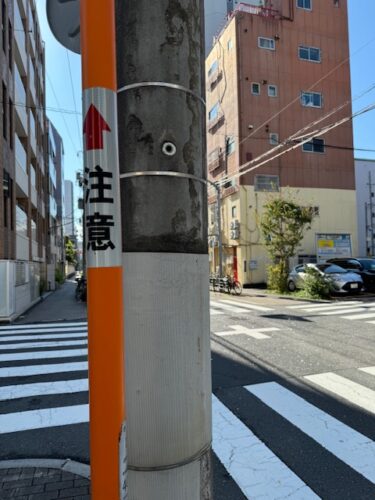
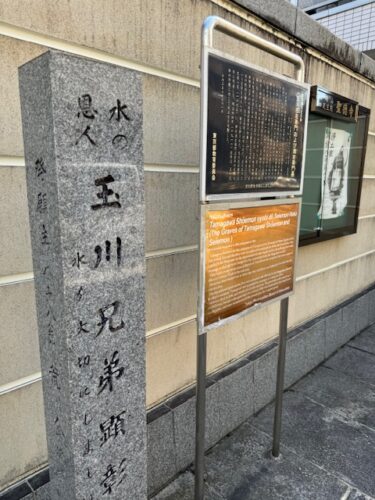
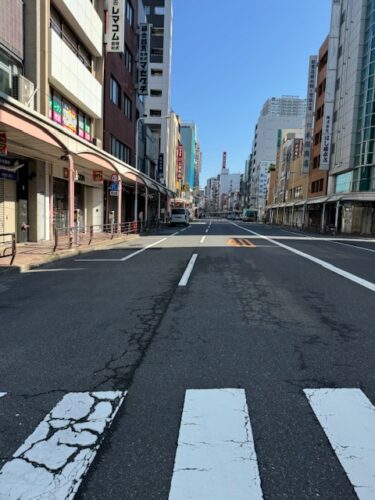
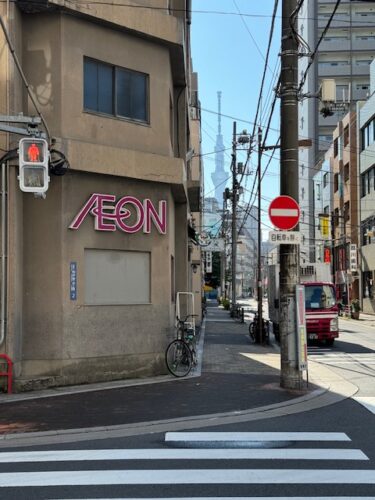
I won’t get lost here. The streets are well-marked.
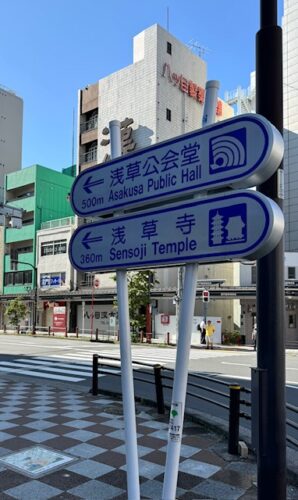
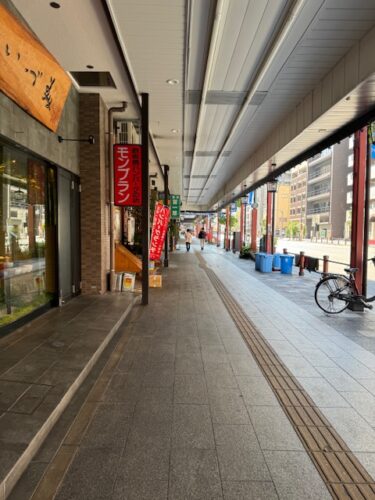
Senso-ji
Pure Land in Asakusa
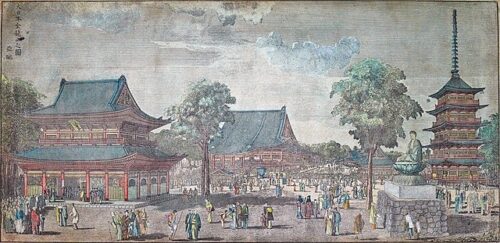
Colored print of Sensō-ji temple, by Aōdō Denzen, c. 1809 (source: wikimedia, public domain).
Kaminarimon (the Thunder Gate)
This is the famous gate that many people are familiar with. It is a freestanding gate that is entered at the front end of the temple grounds. It was built in the 10th century.
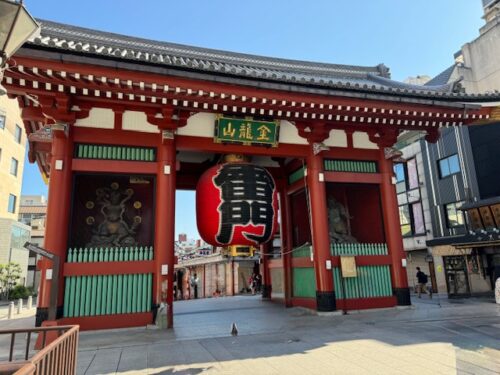
While the lantern’s front shows the two kanji characters for Kaminarimon (雷門), the back depicts the much longer name Furaijinmon (風雷神門).
Furaijinmon, translated as ‘the gate of the gods of wind and thunder’, is Kaminarimon’s official name. It is named for the two statues flanking the gate – Raijin (left), the god of thunder, and Fujin (right), the wind god. The two gods protect locals from storms, floods and fires.
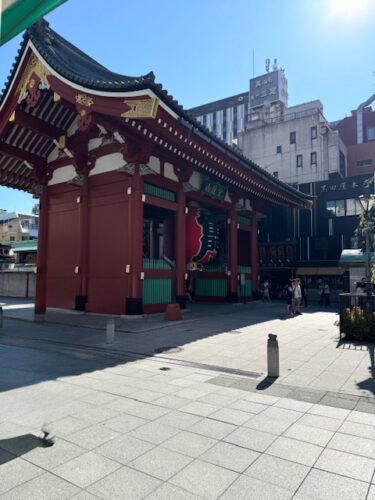
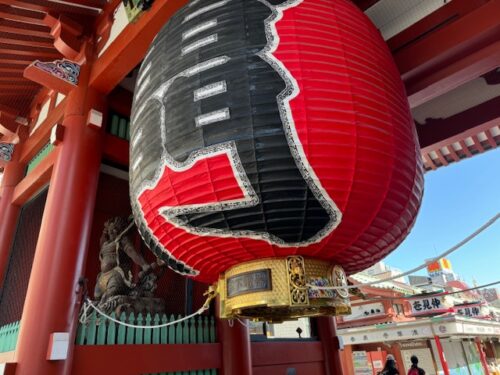
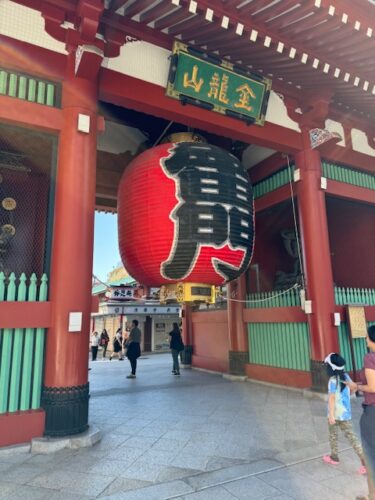
The giant lantern or chochin at the gate is 3.9 meters (almost 11 feet) in height. It is one of the most popular attractions in Tokyo. When I arrived at the temple, it was crowded. People were taking photos with the lantern in the shot. I got my own shot in between a wave of visitors leaving and approaching the gate.
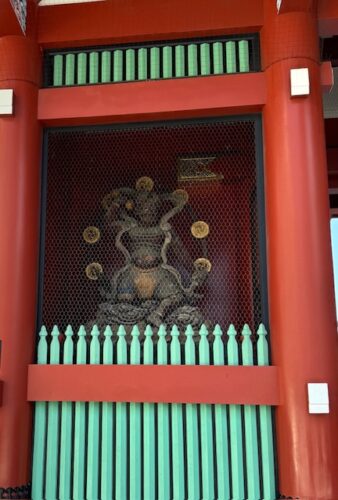
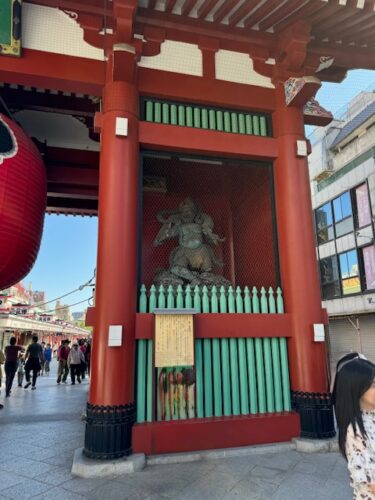
The Nio guardians, Raijin and Fujin, welcome over 30 million visitors to the temple every year.
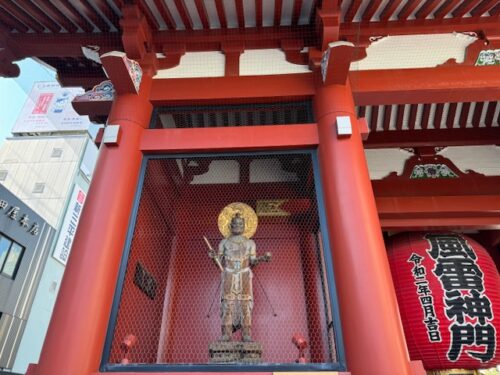
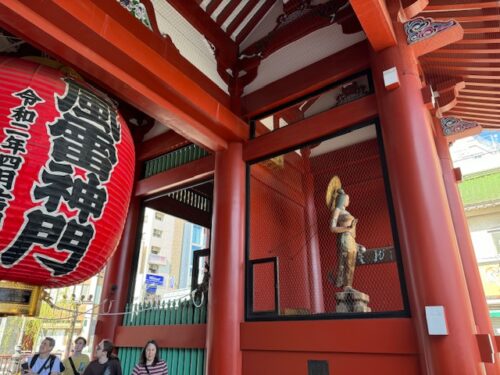
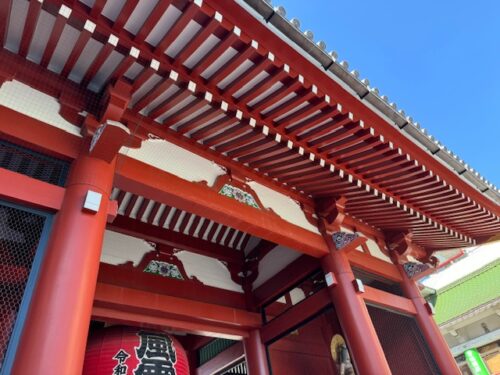
Visitors pass through the great gate to the shopping district, Nakamise-dōri, containing many shops with traditional Japanese goods and foods. Snacks such as ningyo-yaki (small cakes filled with sweet bean paste) or senbei (crispy rice crackers). yukata (summer kimonos), fans, and many other goods are here, too.
The shopping district was established during the Edo period making it one of Tokyo’s oldest shopping streets.
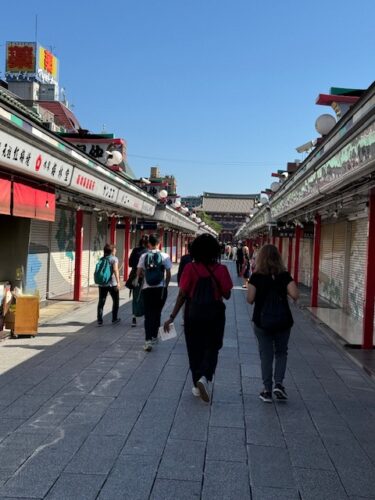
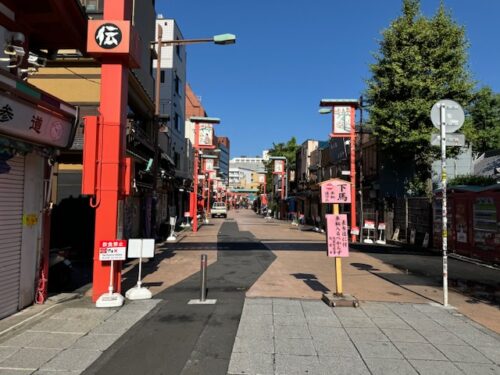
But first, another large gate; this time for the temple.
Hozōmon: Treasury House gate
The middle or inner gate houses many of Sensō-ji’s treasures. After burning down a few times, the structure was finally made with fireproof materials. Now, the temple’s treasures are (hopefully) safely stored here.
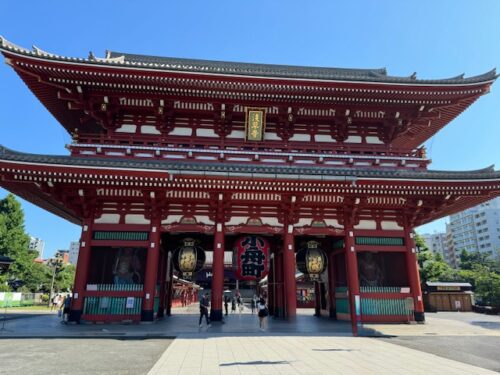
Three lanterns (one large red cochin and two smaller black and gold tōrō) hang on this gate, midway between the great gate and main hall.
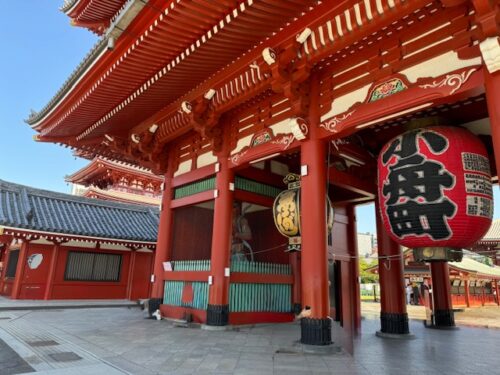
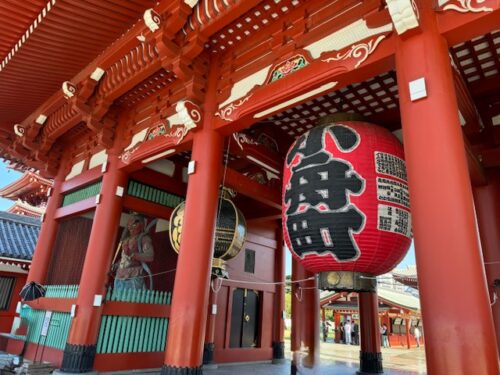
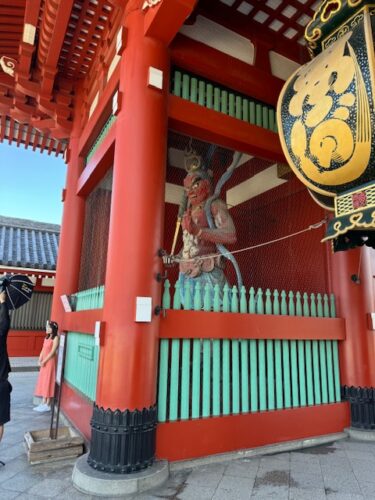
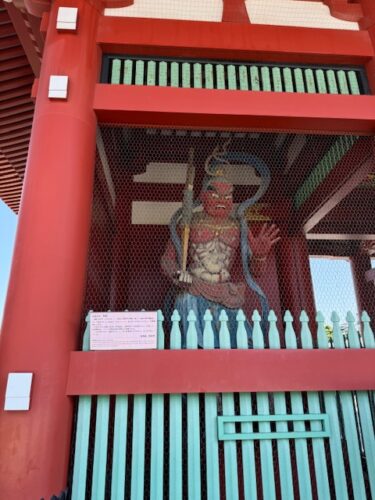
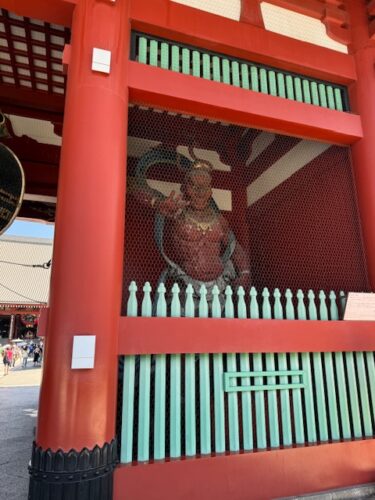
Nio guardians stand in the alcoves of the gate.
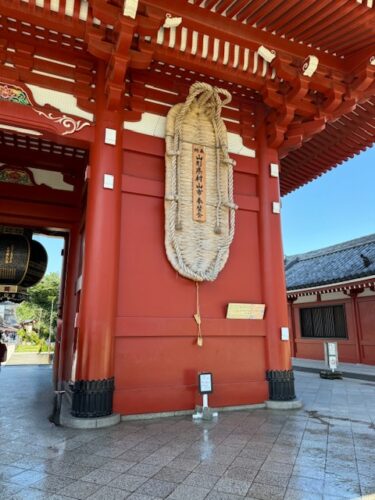
See the giant straw sandals hanging here. They are woven and replaced every ten years.
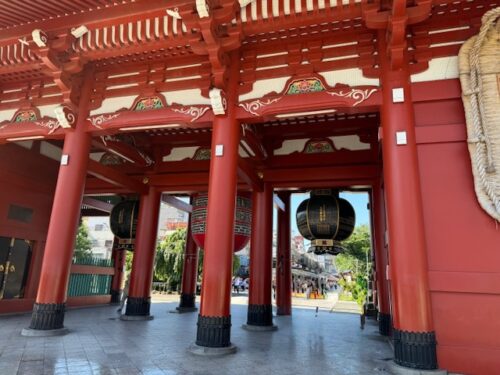
View from the other side.
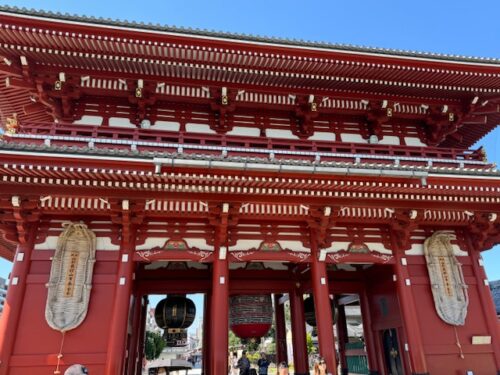
Here is a wide shot of the giant O-waraji (rope sandals) hanging on the back of the gate!
Kannondo (Main Hall)
The hall, like the other main structures on the precinct, had a large red lantern hanging off the rafters.
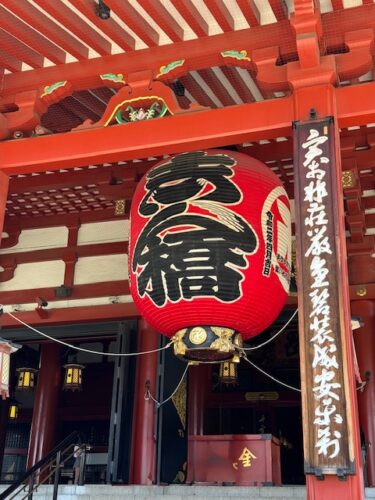
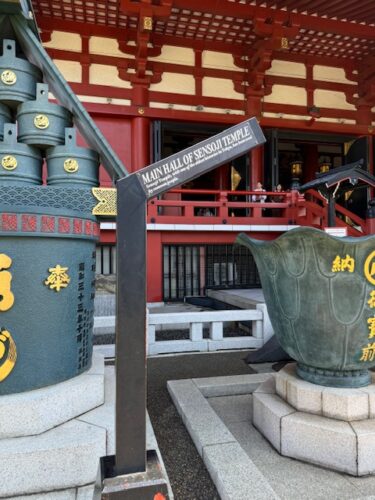
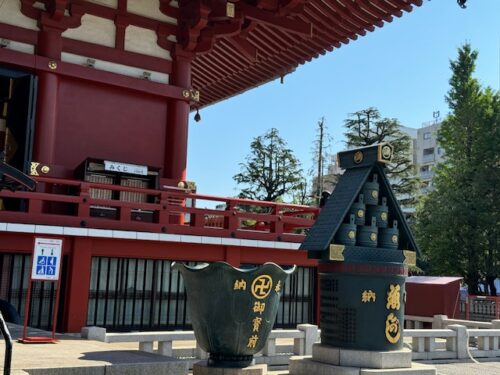
Avalokitesvara Bodhisattva (Sho Kanzeon Bosatsu) – Goddess of Mercy
At the start of my pilgrimage, I was confused about the Goddess of Mercy. It was difficult for me to recognize her. As my walk progressed, I found out that she can appear in many forms. For instance, Avalokitesvara or Kannon can appear with eleven faces or one thousand arms and hands. Nyoirin holding a wish-granting jewel and Dharma wheel is also Avalokitesvara Bodhisattva.
At many temples, the Kannon cannot be seen. It is the same at Senso-ji. Due to the holy status of the statue (having been found in the Sumida River and her meaning to the people in Asakuda), she has been locked in a miniature temple since 645 and cannot be seen by anyone, even chief priests.
*To pray at the main hall,
place your hands together in the Buddhist prayer position and chant
“Namu Kanzeon Bosatsu,
or
“I place my trust in Bodhisattva Kannon.”
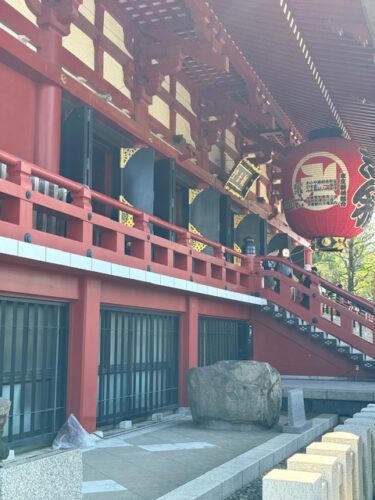
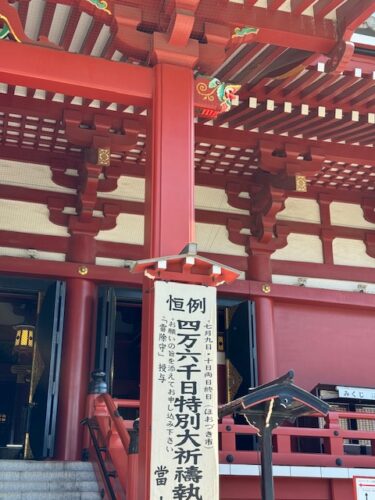
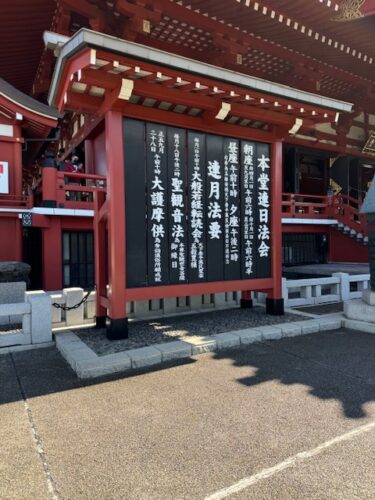
Senso-ji’s main temple has been destroyed and rebuilt a number of times.
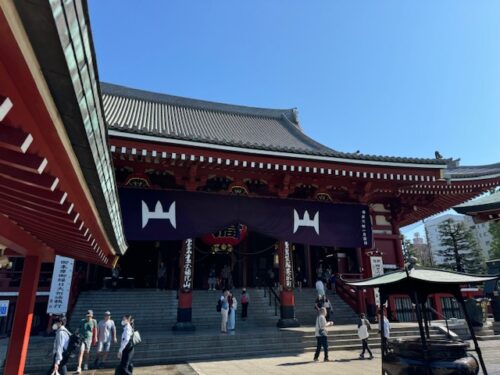
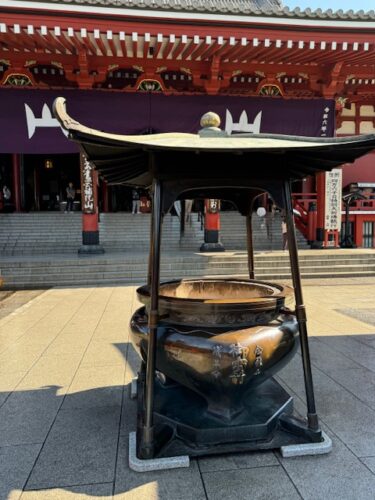
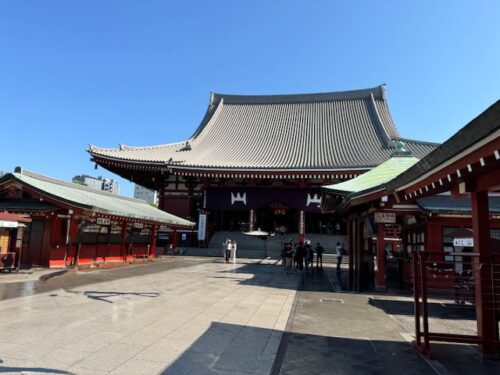
Its latest reconstruction included iron and concrete. Lightweight titanium tiles replaced the traditional Japanese style tiles.
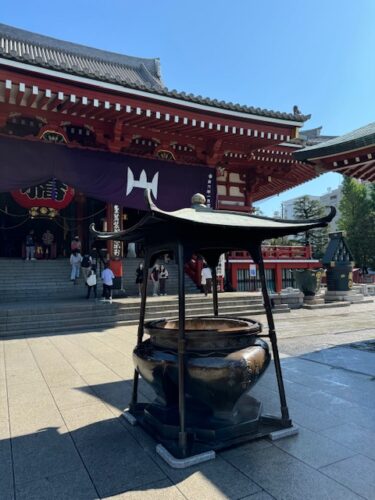
The incense urn stands in front of the main hall.
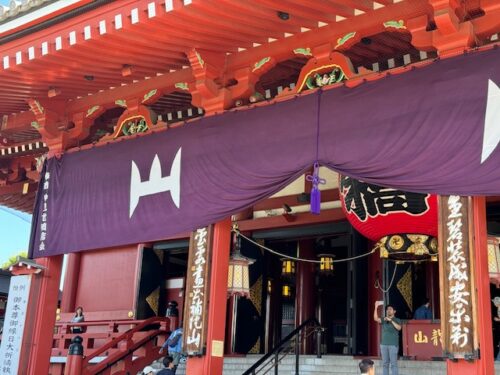
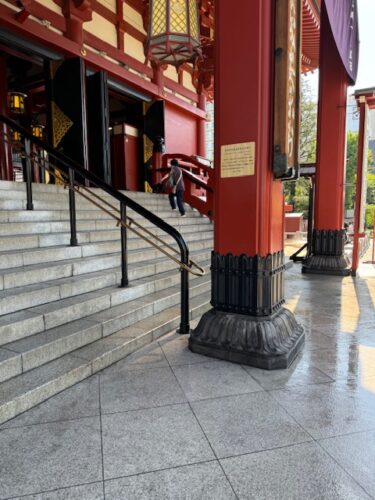
Pillars in front of the main temple have nice, decorative bronze feet.
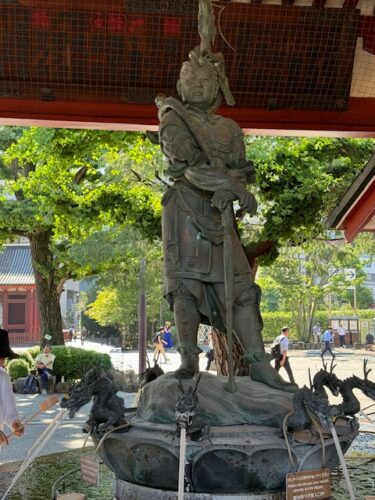
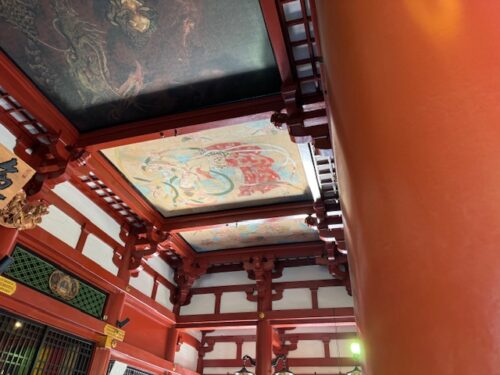
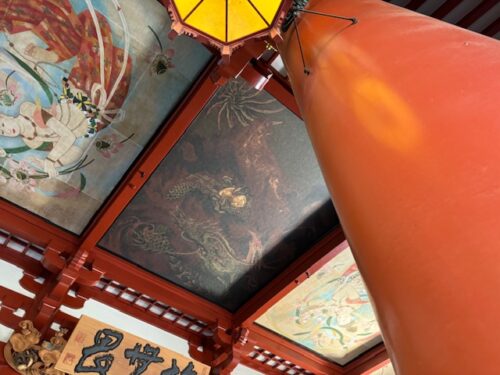
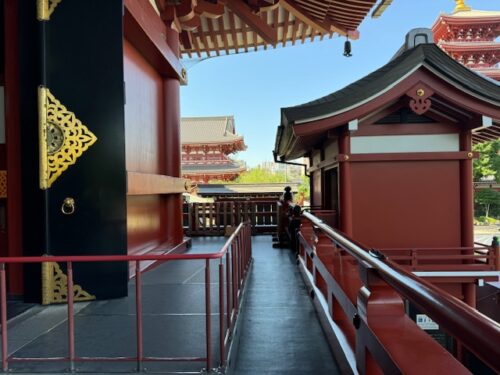
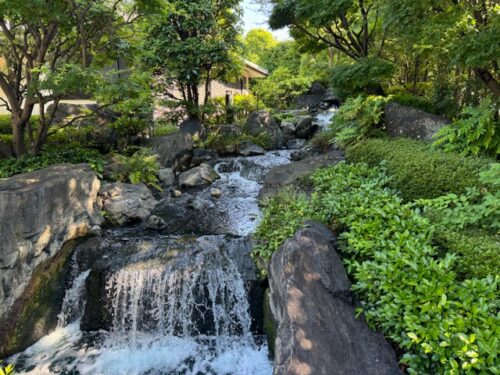
Gojuno-to (Five-storied Pagoda)
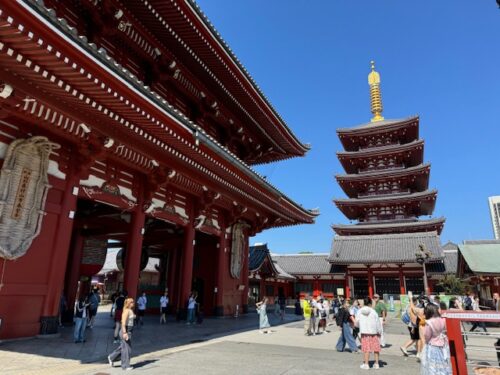
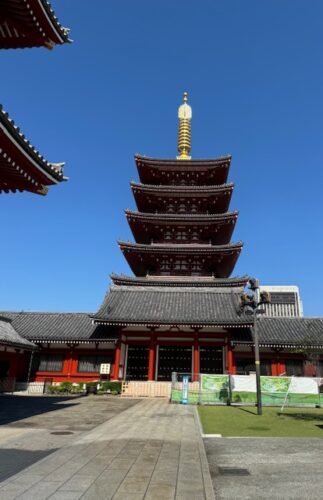
The five-storied pagoda was originally built in 945. It was destroyed in 1945 during the Great Tokyo air raid. The structure was finally rebuilt in the 1970s. Some of Buddha’s ashes were donated by the royal Isurumuniya Temple, in Sri Lanka. They are stored in the uppermost story.
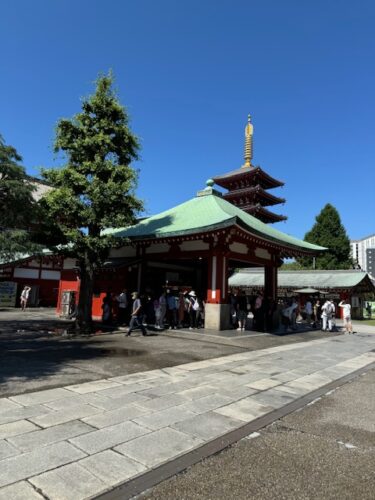
Yogoda hall
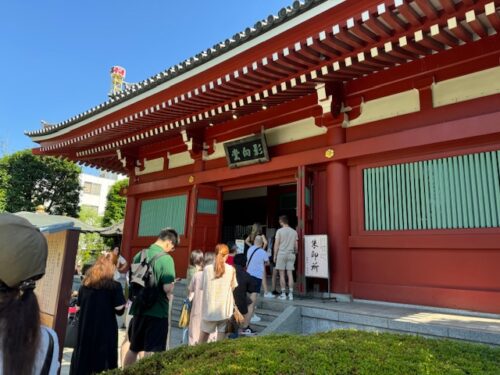
I received a goshuin for my stamp book from the Scarlet seal of Senso-ji, here.
Awashimado
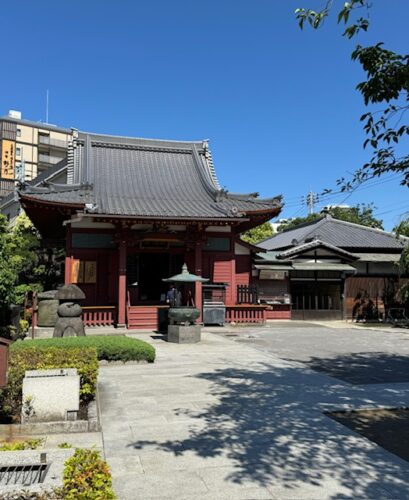
Awashimado was used as the temporary main hall when the temple was firebombed during the Tokyo Air Raids in March 1945.
The hall houses Awashima Myojin, a deity known as the salvation god for women. Visitors can pay their respects and seek divine intercession and blessings.
Asakusa Shrine and Torii
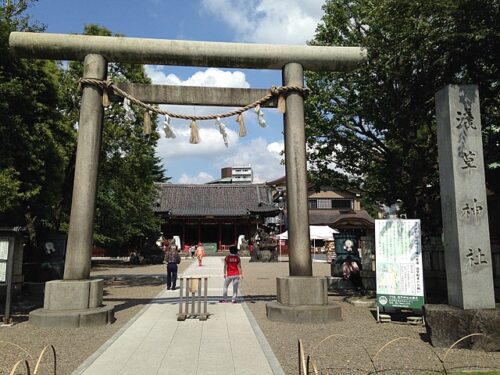
This Shinto shrine honors three men who pulled a golden Kannon, Goddess of Mercy from the Sumida River in 628. The three, two fisherman and the man who owned the land, founded the Senso-ji temple around that time. It is located on the east side of the temple in Asakusa in Tokyo. Asakusa is also known as Sanja-sama (“Shrine of the Three gods”).
Asakusa Shrine survived the bombings of WWII.
Other statues and structures on Senso-ji temple precinct:
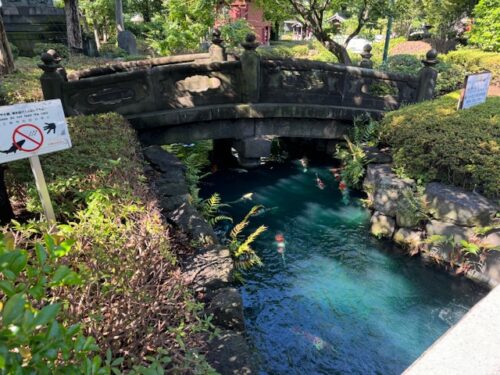
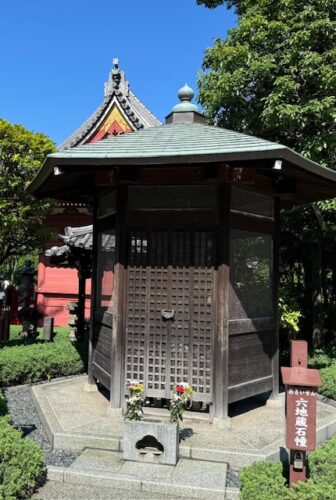
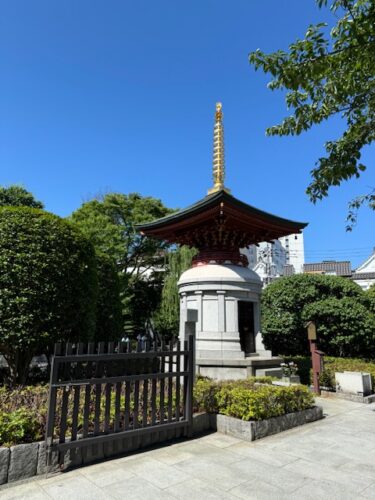
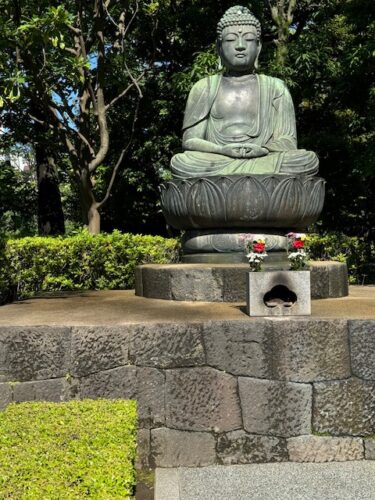
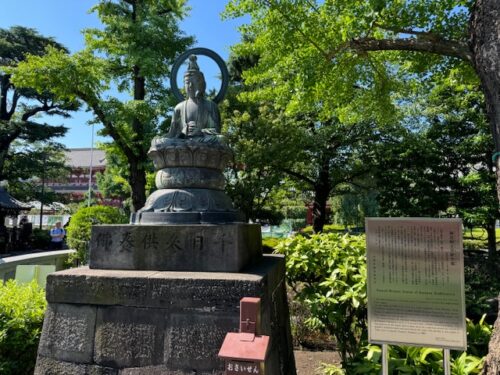
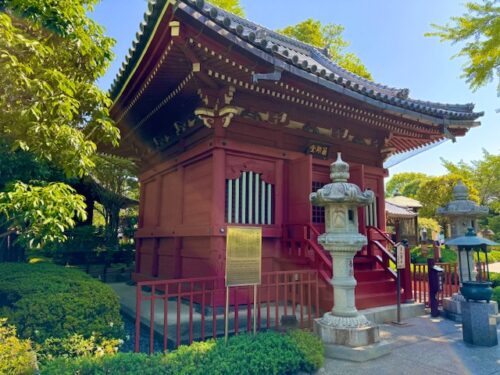
No shame here. The vendors and shoppers make this area and the temple a vibrant, busy, and exciting marketplace. Everything from food to clothes to religious images and amulets are for sale.
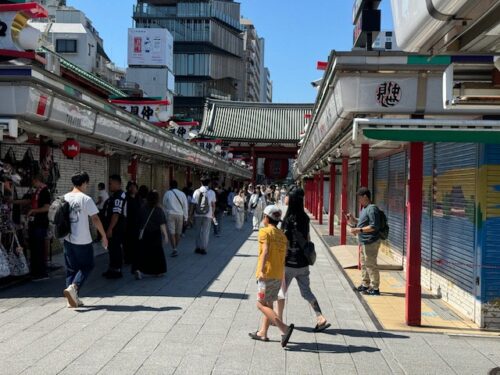
Sadly, it’s time to leave this fabulous place of peace, rebirth and rejuvenation for the Japanese people.
Views of the Sumida River
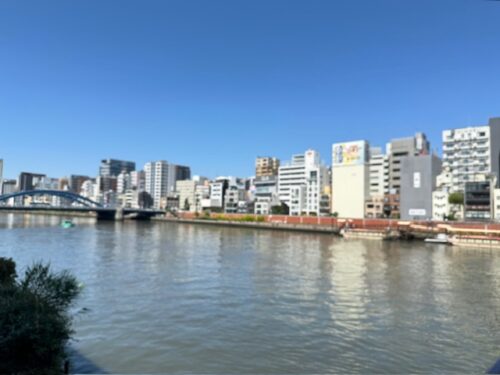
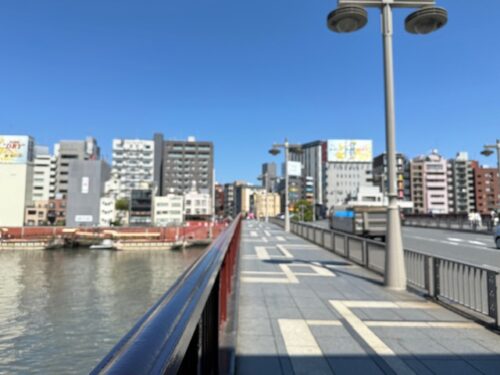
This river winds through central Tokyo to Tokyo Bay. A riverwalk called the Sumida River Terrace is a good way to see Tokyo near Senso-ji. Thirty bridges cross the river through out its length. The river is nicknamed the “museum of bridges.”
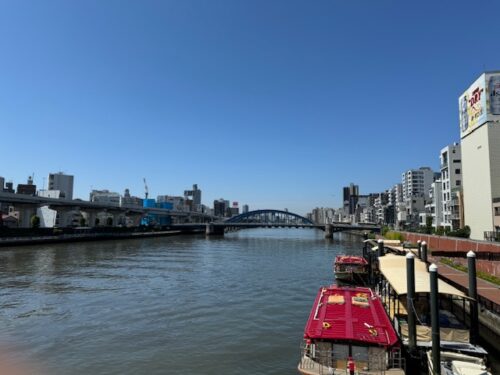
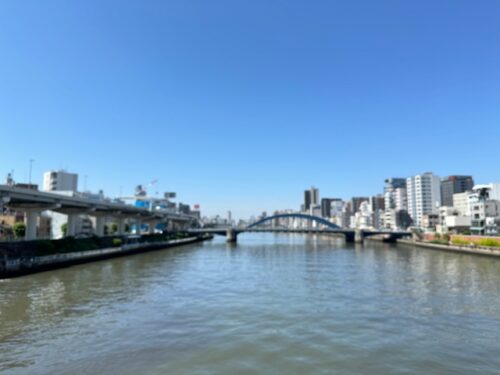
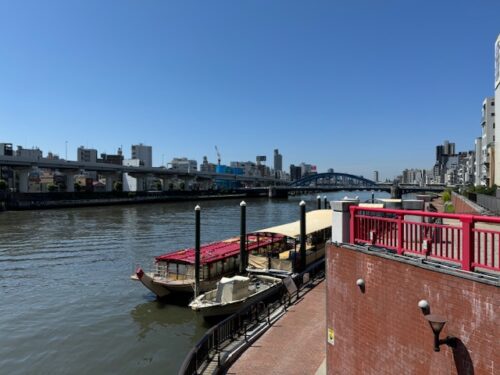
I’m on my way to another landmark in the city. What do you think it could be?
See you next time, still, in Tokyo.
Baadaye and Mata Ne (またね)
Shirley J ❤️
This and several posts this summer chronicled my pilgrimage in Japan where I walked the 1200 kilometer-long Shikoku 88 temple pilgrimage and beyond. Read my announcement here.

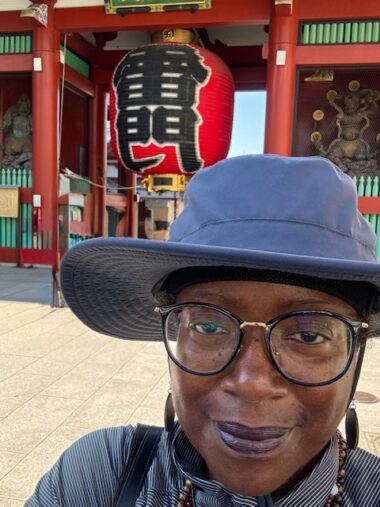
2 thoughts on “🌸 Noire Henro-san: Tokyo – Pt 2”
That’s a very full day! My head would be spinning.
Yes, it can be overwhelming on this scale even in temple setting!🏮
Comments are closed.